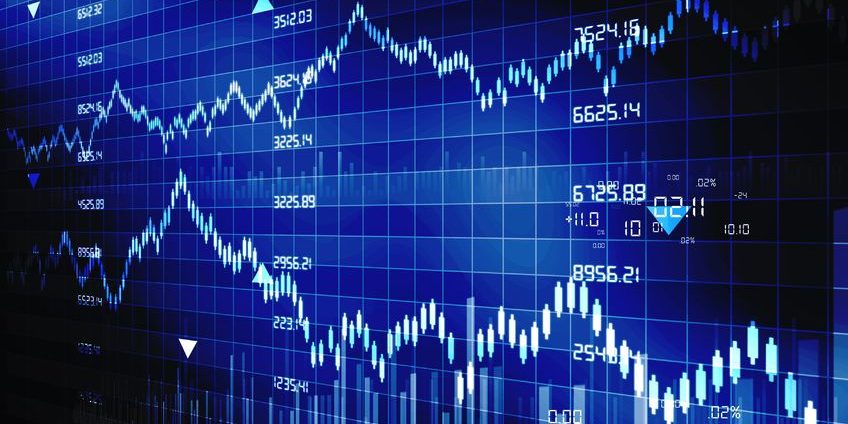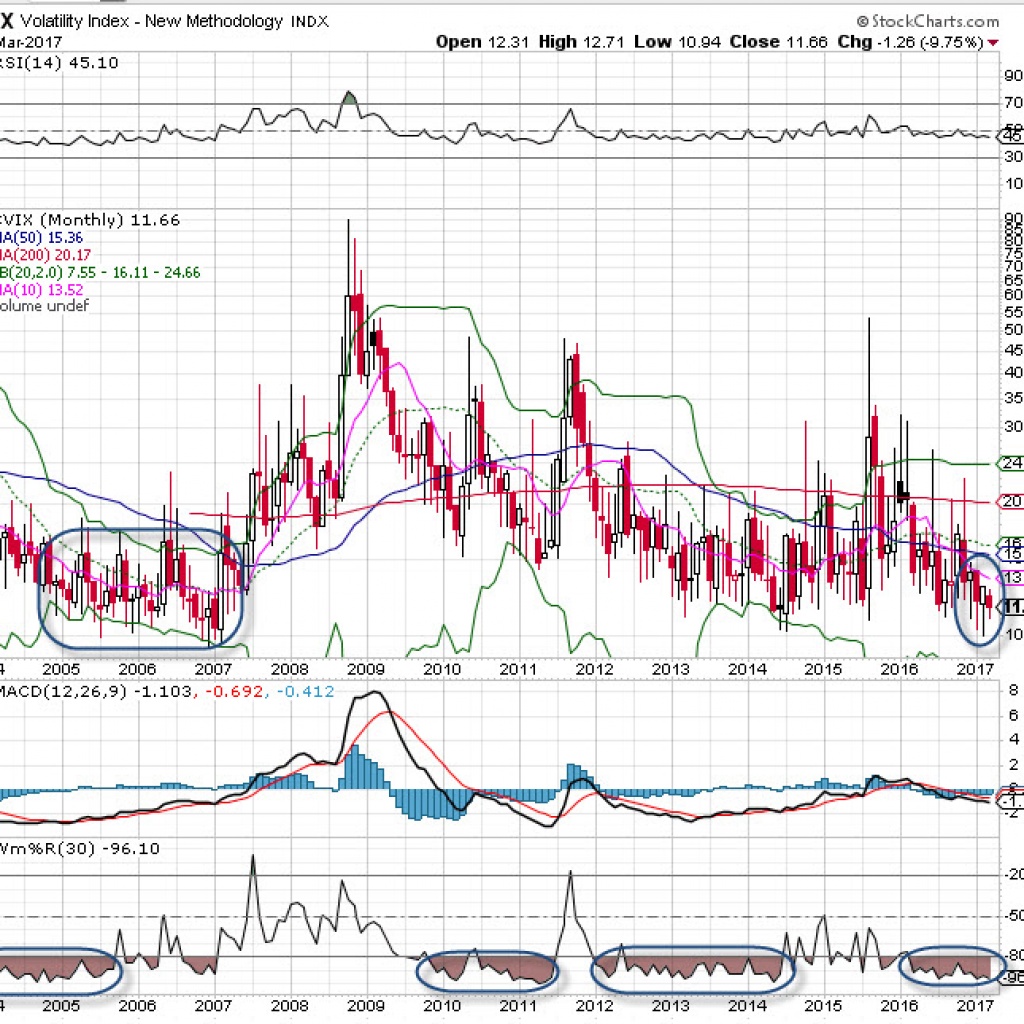The volatility index, or VIX, once again closed under 12% this past Friday. After it collapsed from the low 20s following the presidential election, it has hovered in the 10-13% range so far in 2017. If you’ve been sitting on the sidelines, the low volatility is very frustrating.
Here’s why: The ideal set up is to buy on a significant pullback or correction. Yet, we have not seen anything like that for months and based on the technicals, no significant movement will be happening anytime soon. (Of course, there are surprises around every corner, but we’re not going to predict when or what.)
So what if this low volatility lingers and the “perfect” buy opportunity never materializes? The high opportunity cost will begin to weigh on your mind, wreaking havoc with your mindset. Because the stock market has had such a good run over the past four months, you might wait so long that you take the leap at exactly the wrong moment.
Volatility trends low over the long-term
VIX historical trends show that the index trends lower over time. Look at the chart below, specifically the %R stochastic at the bottom. How many spikes up do you see? And how long do those last? Now look at how many times the VIX trended to oversold and stayed there for long periods of time. Quite a difference, isn’t it?
Of course, who knew the SPX 500 would rise 18% in just four months? Unless you had a crystal ball, you couldn’t have timed it exactly right. Yet, we did have some clues, and the volatility index was one of the best, as it had been falling and not penetrating resistance. Also keep in mind that the VIX is considered the “fear gauge.” On the chart, we see little fear since the election. In fact, any spikes up in volatility were sold aggressively. This is why the VIX has been flat.
Now, when the volatility index stays low, stocks CAN rise. Note, I didn’t say they WILL rise. As the markets have pulled back a bit during the first half of March, volatility has remained flat. This may signal more upside to come when the correction is over (the market is only down about 2%).
Some investors and traders have been wondering if volatility will ever rise again. Of course it will! The markets run in cycles. The last time we saw an extended period of low volatility was from 2005-07. Once the global financial crisis hit, the VIX surged to stratospheric heights. This current period of low volatility is only a few months long.
Sure, you might worry about the lack of opportunity to play both sides of the trade. Those chances will come. You might even make large sums of money, but trying to time it is futile. Wait for the signs, like a rising trend in volatility. You won’t miss it. For now, play the current trend.
Copyright: cooldesign / 123RF Stock Photo





















